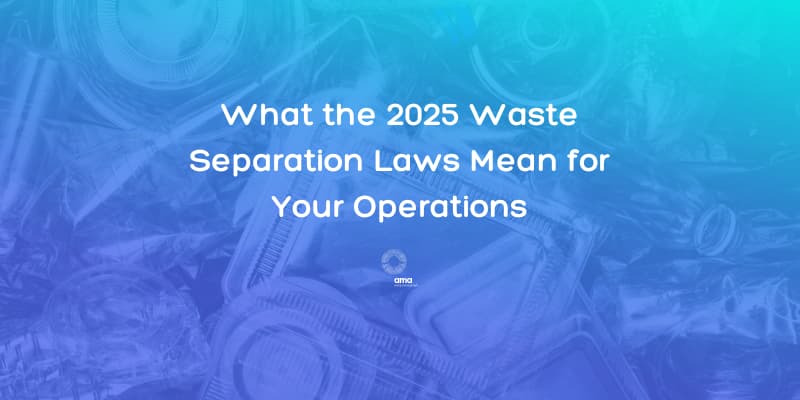Landfill Tax: What You Need to Know
Managing waste responsibly is critical for both businesses and the environment. Improper waste disposal can lead to serious environmental issues such as air pollution, loss of biodiversity, groundwater contamination, reduced soil fertility, and health risks. One way the UK government addresses these challenges is through initiatives like the landfill tax, introduced to reduce waste sent to landfill sites.
What is Landfill Tax?
Landfill tax is an additional charge businesses and organisations must pay when using landfill sites. It discourages reliance on landfill by increasing the financial burden and incentivising recycling and waste reduction.
Why Was Landfill Tax Introduced?
Introduced in 1996, this type of tax aims to reflect the true environmental costs of landfill waste. By discouraging disposal in landfill sites, it helps reduce overall waste generation and promotes recycling. In 2000/01, 79 million tonnes of waste were sent to landfill in the UK, but by 2019, that figure had fallen to 45 million tonnes, showcasing its effectiveness.
How is the Tax Charged and What Are the Current Rates?
Landfill operators collect the tax and pass the cost to those disposing of waste. There are two rates:
Standard Rate
This applies to “active waste”—materials that decay or contaminate the land.
- Rate from 1 April 2024: £103.70 per tonne.
- Rate from 1 April 2025: £126.15 per tonne.
Lower Rate
This applies to “inactive waste,” such as construction materials like bricks, soil, and glass.
- Rate from 1 April 2024: £3.30 per tonne.
- Rate from 1 April 2025: £4.05 per tonne.
These updated rates reflect the UK government’s continued commitment to reducing landfill waste.
Who Pays Landfill Tax?
While landfill sites are directly responsible for paying the tax to the government, the cost is passed down the chain to waste collectors and their clients. Ultimately, businesses disposing of waste in landfill bear the cost. Certain exemptions apply—find more details here.
How to Reduce Tax Costs
Minimising waste sent to landfill is the only way to cut landfill tax expenses. Consider:
- Using reusable items instead of disposables.
- Increasing recycling efforts.
- Identifying and reducing waste in business processes.
- Adopting digital solutions to reduce paper use.
- Partnering with waste management professionals to find cost-efficient solutions.
Government Initiatives to Support Businesses
Programmes like these help businesses reduce reliance on landfill:
Zero Waste to Landfill
Certification recognises businesses diverting all waste from landfill. Benefits include cost savings, improved compliance, and environmental credibility.
WRAP (Waste and Resources Action Programme)
WRAP works with industries to reduce landfill waste. It has helped over 700 construction companies halve their waste through targeted initiatives.
How AMA Waste Can Help
At AMA Waste, we help businesses reduce waste and avoid landfill reliance. Over 90% of the waste we collect is diverted away from landfill, saving costs and supporting sustainability.
We offer:
- Detailed waste reports.
- Support for Zero Waste to Landfill certification.
- Expert advice on cost-effective waste solutions.
Contact us today at 0330 660 0832 or email us at skiphire@amawaste.co.uk.
In Summary
Landfill tax encourages businesses to rethink waste disposal practices. By working with trusted partners like AMA Waste, you can reduce costs and minimise your environmental impact.

